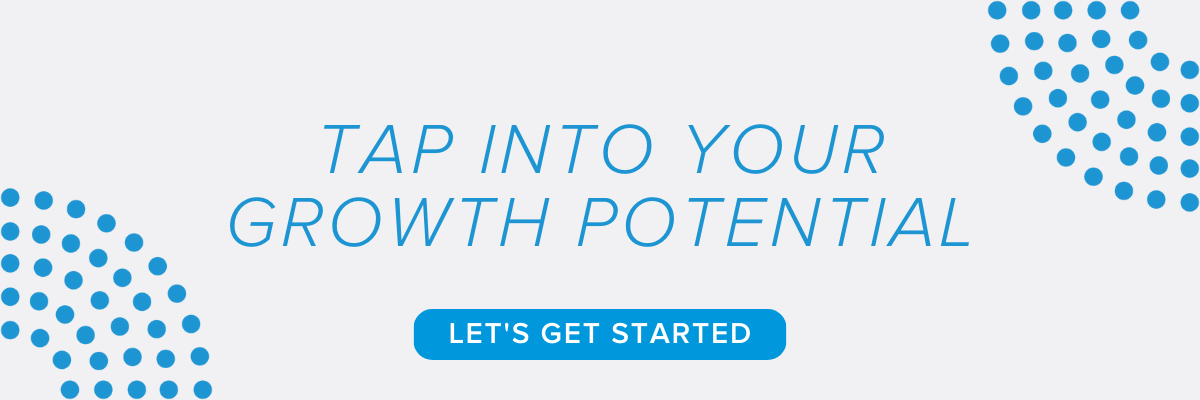Blog
Accessing the Next Stages of Growth


Over the last ten years, increasing numbers of advisors have begun the process of creating sustainable businesses. Many advisors started out as a book or a practice—one-generational models. They took steps to create much more valuable, multi-generational businesses by focusing on enterprise strength and setting up or restructuring essential business structures.
The M&A marketplace is becoming increasingly competitive. Businesses need a strong value proposition to step away from the crowd. Owners who have taken steps to work on building their enterprises are in the best position to leverage their unique business aspects to access more growth opportunities and become successful acquirers or merger partners.
MULTI-GENERATIONAL STRENGTH
Multi-generational teams support stronger business models for many reasons. Younger advisors often bring in younger clients which reinforces the health of the business and promotes balance in the client demographics. The business benefits from a diverse range of ideas and skill sets. Advisors can learn from one another, as reverse mentorships allow for sharing of skills and insights both ways.
For a solo advisor looking to slow down, the opportunity to sell into a multi-generational enterprise and take on a mentorship role for a few years can be attractive. For a potential merger partner, this team structure is preferable to an owner-centric practice because it isn’t dependent on just one person’s skills or personality.
VALUE
The value of multi-generational enterprises is higher than those of single-owner books or practices. One of the largest drivers of business value is revenue. Our recent Transactions and Valuation Study* reported that multi-generational enterprises have increased revenue and growth rates–especially when the ages of the ownership team are diversified–leading to higher value.
Value also lies in the entity, infrastructure, and team that solo advisors do not have. For example, three advisors may each have a book valued at $300,000. If those three advisors come together to form a strong, diverse enterprise, value tends to be more, sometimes far more, than $900,000. These advisors are not only combining revenue streams, they are creating operational efficiencies and a refined business structure.
A buyer’s business value is just as important as a seller’s. In most acquisitions, the buyer’s value is at least two to three times the size of the seller’s value. The larger a business is, the larger the practice it can successfully acquire.
BUSINESS MONITORING
Smart owners regularly monitor the financial and operational health of their businesses. Benchmarking reports compare revenue strength and enterprise strength to peers, which enables owners to make corrections or improvements to their business. A pro forma spreadsheet tracks revenues, expenses, profits, owners’ salaries and bonuses, distributions, and the ownership breakdown for the current year as well as projecting key operational metrics into the future. Any significant changes to revenue, expenses, or profitability can be immediately addressed with knowledge and in the context of a greater plan. A strong enterprise with these (and other) monitoring tools at their disposal is a more desirable buyer or merger partner as it shows agility and the ability to pursue the best avenues for growth and sustainability.
LEVERAGING EXPERTISE
Economies of scale allow each person in a larger business to focus on their area of expertise without having to wear too many hats and potentially dilute their effectiveness. An advisor working within an enterprise and not within a one-person or one-owner practice can delegate responsibility for areas outside of their focus (such as human resources or compliance). This allows the advisor to concentrate on areas in which they are most effective, like business development and asset management. This enables the enterprise to grow more quickly and efficiently.
This could be attractive to a solo, successful producer as joining a larger enterprise would allow them more time to focus on their client relationships. It could also help a seller understand that their former clients would be in exceptional hands.
CONTINUITY
An equity-centric business is attractive to other equity-centric businesses because of the mutual concern regarding continuity. A one-person book is risky because all the knowledge and client relationships can quickly disappear when the founder is gone or even temporarily disabled. In a sustainable enterprise, a strong team ensures continuity of both customer care and retention of revenue if anything happens to an advisor.
ACCESS TO FINANCING
Strong, sustainable enterprises have more access to financing options and other tools available to help support business growth and ownership transitions. A working capital loan can be used to boost business growth whether it includes acquisition, internal succession, or business development. Bank financing can also substantially reduce the dollar amount of the seller financing that is needed for a transaction, and it can shorten the time it takes for the seller to be paid in full. Regardless, businesses built to last have a much easier time borrowing money. Individual book or practice owners pose a riskier proposition to lenders because just one person is responsible for repayment.
TECHNOLOGY
Enterprises tend to have the bandwidth to keep abreast of new industry information, new technology, and the constant stream of changes in this highly-regulated profession, allowing them to more efficiently serve their clients. More and more communication, relationship management, and other business tools are being facilitated online and through new software. Clients will expect their advisor’s business to adapt. The more ability a business has to evolve and grow with the marketplace, the more valuable and desirable it is to a potential merger or business partner.
HUMAN CAPITAL
The opportunity to acquire ownership in a growing business is attractive to current and prospective employees. Building an investable business shows a commitment to a long-term career path. Larger, stronger enterprises can provide more comprehensive training programs as well, as they have built-in trainers and mentors to assist the next generation of advisors. Given the competition for talent sure to dominate the industry in coming years, these kinds of benefits are attractive to potential employees and advisors and can provide an advantage for the business. Plus, the existing team ensures the enterprise is well-equipped to service an acquired (or merged) client base.
INTELLIGENT COMPENSATION
A properly engineered compensation system supports a high level of profitability, especially in a fee-based revenue structure. Instead of the traditional revenue-sharing model, owners are paid a salary for the work they perform, and they receive profit distributions in exchange for the investment risk they are taking. Combining the benefits of compensation with the benefits of profitability helps owners and advisors focus on the efficient, scalable growth of the business instead of solely on personal production. Proper compensation supports talent retention and business stability, providing an advantage when courting merger partnerships and acquisition opportunities.
As a potential buyer or business partner, these benefits of enterprise help a business remain competitive in an M&A market that is booming. The capacity for growth and the strength of multi-generational enterprises give these businesses a significant advantage over those acquirers who have built books and practices with little to no infrastructure or compelling value proposition to offer.
Let us help you access your next stages of growth. Click the banner below to get started!
